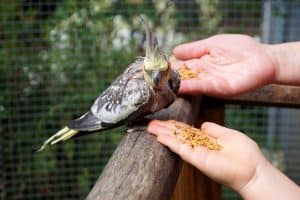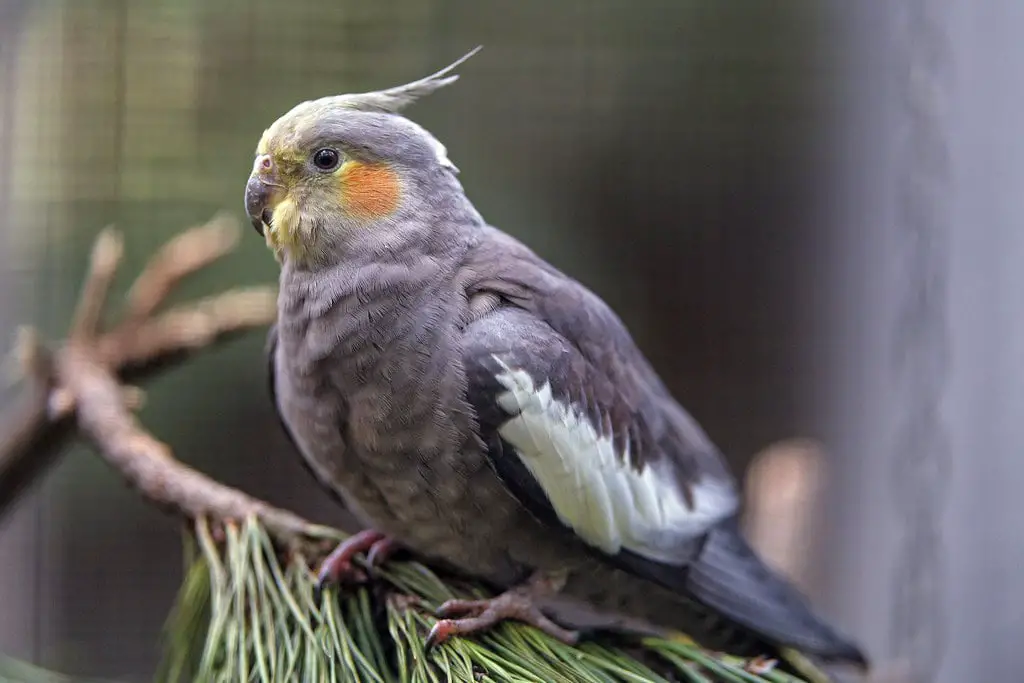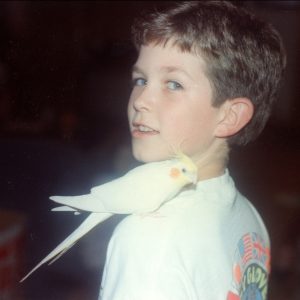Imagine your child’s face lighting up as they interact with a bright-eyed cockatiel, their new feathered friend. Cockatiels are among the most popular pets for families, known for their friendly temperament and ability to bond with humans. But how do children make cockatiels as pets? It’s not just about bringing a bird home; it involves understanding and commitment.
From setting up the right environment to learning about their care, children can develop a strong, nurturing relationship with these charming birds. Engaging with a cockatiel teaches responsibility and compassion, offering more than just companionship. Let’s explore what makes cockatiels great pets for kids and how your little ones can safely form a lasting bond with these delightful creatures.
Assessing Your Child’s Readiness for a Cockatiel
Bringing a cockatiel into your family requires careful consideration, especially when it involves children. To ensure a positive experience, you must assess whether your child is ready for the responsibility that comes with pet ownership.
Understanding Responsibilities
Owning a cockatiel involves more than enjoying its companionship; it encompasses daily commitments to maintain the bird’s health and well-being. Explain to your child that they will need to provide fresh food and water daily, clean the cage regularly, and ensure the cockatiel gets enough mental stimulation. Discuss the importance of a balanced diet, which not only includes seeds but also fresh fruits and vegetables. Make sure your kid understands that they must also be observant of any changes in the cockatiel’s behavior or physical health, which might necessitate a visit to a vet.
Assessing Mature Handling
Cockatiels are delicate creatures and require gentle handling to avoid injuries to their wings or tail feathers. Before deciding to own a cockatiel, observe your child’s interactions with smaller animals or birds. They should demonstrate the ability to remain calm and gentle, attributes necessary to prevent startling or harming the cockatiel.
It’s also crucial that your child learns how to interpret the bird’s body language and respect its space, especially during feeding or when the cockatiel wishes to be left alone. If your child can handle these responsibilities and understands the need for careful interaction, they may be ready to have a cockatiel as a pet.
Benefits of Cockatiels as Pets for Children
Cockatiels, belonging to the cockatoo family, offer significant benefits as pets for children, encompassing emotional and social growth as well as instilling a sense of responsibility. These small parrots are known for their friendly demeanor and ability to form strong bonds with humans, making them wonderful companions for young pet owners.
Emotional and Social Development
Interaction with cockatiels can boost your child’s emotional maturity and social skills. These birds often require daily interaction that helps children learn empathy and compassion as they respond to the bird’s needs and moods. Cockatiels also react to their owners’ emotions, learning to whistle or sing in response to a happy environment, which can help your child understand the impact of their behavior on others. Additionally, the need for delicate handling encourages gentle interactions, teaching kids how to be considerate and careful with living beings.
Teaching Responsibility and Care
Owning a cockatiel introduces children to the concepts of regular commitment and long-term care. Your child learns responsibility by participating in daily care routines such as feeding, providing fresh water, and cleaning the cage. These tasks help them understand the importance of consistency in care for the well-being of their pet.
Furthermore, managing a cockatiel’s diet, which may include pellets, seeds, and the occasional treat like fruits, not only teaches about nutritional balance but also about the planning and preparation involved in maintaining an animal’s health. This fosters organizational skills and helps children appreciate the role of nurturing in keeping another living creature healthy and happy.
Choosing the Right Cockatiel

Choosing the right cockatiel involves several considerations that ensure a healthy, happy relationship between your child and their new pet. This section will help you understand what factors to consider before bringing a cockatiel home and guide you on where to adopt or purchase one.
Factors to Consider
Selecting the right cockatiel for your family isn’t just about picking the bird with the prettiest feathers; it’s about ensuring compatibility and a healthy lifestyle. First, consider the age of the cockatiel. Younger birds are often easier to tame and may adapt more readily to new environments and people, including children.
Next, examine the cockatiel’s health; clear eyes, clean feathers, and active engagement are good signs. Cockatiels are part of the cockatoo family and thrive on social interaction, so their personality should be a good fit for your family’s lifestyle. They require daily interaction and mental stimulation to maintain their well-being.
Cage size is another crucial factor. Your cockatiel needs enough space to move freely, stretch its wings, and engage with various toys and perches. The minimum cage size recommended is 20 x 20 x 24 inches, but larger is always better to promote physical activity and mental health. Lastly, consider the bird’s diet, which should be varied and nutritious, including seeds, pellets, fruits, and vegetables to keep your cockatiel healthy.
Where to Adopt or Purchase
When deciding where to get your cockatiel, you have two main options: adopting from a rescue or purchasing from a breeder or pet store. Adoption is a fantastic way to give a second chance to a bird that might need a new home. Contact local bird rescues and shelters; these organizations often provide health assessments and can help match you with a bird that suits your family’s lifestyle.
If you choose to purchase from a breeder, ensure they are reputable and have a transparent breeding and care program. Good breeders will allow you to visit and see the conditions in which the birds are kept. They should also be knowledgeable about cockatiel care, including proper diet, socialization techniques, and health issues. Pet stores can be a convenient option, but it’s essential to research their sources and the health of their birds carefully before making a purchase.
Whether you adopt or buy, always prioritize the welfare of the cockatiel and ensure you’re prepared to provide a loving, stable home.
Preparing Your Home for a Cockatiel

Now that you have chosen the perfect cockatiel, preparing your home is the next crucial step. A properly set up home not only ensures the safety and comfort of your new pet but also contributes to its overall well-being and happiness.
Cage Setup and Placement
Selecting and setting up the right cage is fundamental for your cockatiel’s health and happiness. Ensure the cage is spacious enough to allow your cockatiel to spread its wings fully without touching the sides—a minimum size of 20x20x24 inches is recommended. Position the cage at eye level in a well-lit area but away from direct sunlight and drafts. Include multiple perches of varying materials and thickness to help keep your cockatiel’s feet healthy, and ensure these are not placed directly over food dishes to prevent contamination.
Place the cage in a part of your home where there’s family activity but avoid overly noisy or chaotic areas. This location ensures your cockatiel receives the daily interaction it needs without becoming stressed by constant noise. Always ensure the cage has a view outside a window if possible, as this provides mental stimulation for your cockatiel.
Safe Environment in Your Home
To create a safe environment, eliminate potential hazards from the areas around your cockatiel’s cage. Remove toxic plants, and ensure no harmful fumes from cooking or chemical agents can reach the bird. Using non-stick cookware can be dangerous around birds, as fumes from overheated pans can be lethal to your feathered friend.
Ensure all windows and doors remain closed or securely screened when your cockatiel is out of its cage. Other pets in the house, such as cats and dogs, must be introduced to the cockatiel gradually and under strict supervision to prevent any accidents. Regularly inspect toys and perches for signs of wear and tear to avoid injuries, and replace them as necessary to keep your bird safe and engaged.
By following these tips, you’ll create a welcoming and secure environment that can help nurture a long-lasting and joyful relationship with your cockatiel.
Daily Care and Maintenance
Once the environment is safely arranged for your cockatiel, you’ll need to establish a routine for daily care and maintenance. This attention to detail ensures your pet enjoys a comfortable and stimulating life, aligning with the previously discussed safe environment setup.
Feeding and Nutrition
Consistency and balance are key in feeding your cockatiel. These birds thrive on a mix of high-quality commercial seed formulated specifically for cockatiels, supplemented with fresh vegetables like carrots and greens, and occasional fruits such as apples and bananas. Always remove fresh food within a few hours to prevent spoilage. Additionally, provide a constant supply of fresh water in a clean dish. A consistent diet not only maintains a cockatiel’s physical health but also its emotional well-being, keeping the bird lively and interactive.
Health Monitoring and Hygiene
Regular health checks play a crucial part in maintaining your cockatiel’s health. Monitor your bird daily for any signs of distress or illness, such as changes in eating habits or unusual feather plucking. Keeping the cage clean is also essential; remove waste and uneaten food daily, and perform a deep cleaning of the cage with safe, approved products weekly.
Providing toys and perches will help keep your cockatiel’s environment sanitary and mentally stimulating, reducing stress and promoting physical activity. Hygiene, coupled with regular veterinary check-ups, ensures your cockatiel remains a healthy and happy companion.
Training and Socializing Your Cockatiel
Once you’ve prepared your home for a new cockatiel and covered the basics of daily care and maintenance, it’s time to focus on the next crucial steps: training and socializing your pet. These aspects are vital for ensuring your cockatiel becomes a happy, well-behaved companion, especially for children.
Basic Training Tips
Start training your cockatiel with simple commands and a routine that fits into your daily life. First, establish a trust bond by spending time around the cage and speaking softly, allowing the bird to get accustomed to your presence. Gradually, you can begin to offer treats from your hand to build trust.
Training a cockatiel requires consistency, so set aside a few minutes each day for this purpose. Incorporate basic commands like ‘step up’ onto your finger or a perch, which not only teaches discipline but also aids in handling your pet safely. Reward your cockatiel’s progress with praise and an occasional treat, ensuring these treats are healthy and suitable for their diet.
Interaction Between Children and Cockatiels
Encourage gentle interaction between your child and the cockatiel to foster a bond. Kids should learn early on how to behave around the cockatiel to prevent stress and fear in the bird. Teach your child to approach the cage calmly, avoiding loud noises or sudden movements. They should also learn the correct way to pet the cockatiel, focusing on areas like the chest and avoiding sensitive spots such as the wings and tail feathers.
With your guidance, children can play an active role in training sessions, which can help reinforce commands and deepen the bond between them and the cockatiel. Always supervise these interactions to ensure they remain positive experiences for both the child and the bird.
By actively participating in the training and socialization of their cockatiel, children not only gain a wonderful companion but also learn valuable lessons in responsibility and empathy. These activities offer both mental stimulation for the cockatiel and a unique opportunity for children to develop patience and understanding, key components of a successful relationship with any pet.
Takeaway: How Do Children Make Cockatiels as Pets
Owning a cockatiel offers a unique opportunity for your child to grow and learn in a nurturing environment. By selecting the right bird and setting up a proper home you’ll pave the way for a fulfilling companionship. Engaging in regular care and training not only ensures the well-being of the cockatiel but also instills valuable life skills in your child. Embrace this journey with your child and watch as they develop a loving bond with their feathered friend enriching their life and yours.
Other suggested articles:
Can a Cockatiel Be Left Alone for a Weekend?
How to Get a Cockatiel to Sit on Your Finger (2 Training Tips)
- How Can Your Other Pets Be Harmful To Your Cockatiel
- How Cockatiels Show Affection
- How Do Children Make Cockatiels As Pets
- How Do Cockatiels See
- How Do Cockatiels Sleep
- How Do Fumes Affect Your Cockatiel
- How Do You Care For Your Cockatiel Everyday
- How Do You Choose A Cage For Your Cockatiel
- How Do You Medicate Cockatiels
- How Do You Provide Your Cockatiel With Water
- How Do You Select Your Cockatiel
- How Do You Tame A Cockatiel
- How Does A Cockatiel Got Her Name
- How Far Can A Cockatiel Fly
- How Far Can A Cockatiel See
- How Fast Can Cockatiels Fly
- How Good Is A Cockatiels Memory
- How Long Can A Cockatiel Go Without Food
- How Long Can Cockatiels Go Without Water
- How Long Do Cockatiels Actually Live For In Captivity
- How Long Do Cockatiels Live In Captivity
- How Long Does It Take For Clipped Wings To Grow Back
- How Long Does It Take For Cockatiel Tail Feathers To Grow Back
- How Long Should A Cockatiel Be Out Of Its Cage
- How Often Do Cockatiels Lay Eggs
- How Often Do Cockatiels Poop
- How Often Should A Cockatiel Go To The Vet
- How Should I Set Up My Cockatiels Cage
- How To Bathe Your Cockatiel
- How To Bird Proof A Room
- How To Bond Two Cockatiels
- How To Bond With A Scared Cockatiel
- How To Build Trust With A New Cockatiel
- How To Calm A Stressed Cockatiel
- How To Care For Your Cockatiels Health
- How To Care For Your Cockatiels Nails
- How To Catch A Cockatiel
- How To Clean Cockatiel Nose
- How To Clip A Cockatiels Nails
- How To Discipline A Cockatiel
- How To Find A Cockatiel That Flew Away
- How To Get A Cockatiel Back Into Its Cage
- How To Get A Cockatiel To Go On Your Hand
- How To Get A Cockatiel To Like You
- How To Get A Cockatiel To Sit On Your Finger
- How To Give Your Cockatiel Exercise
- How To Grow Millet For Cockatiels
- How To Hold A Cockatiel
- How To Introduce A New Cockatiel To Another
- How To Keep A Cockatiel Quiet
- How To Keep A Cockatiel Warm 10 Tips And Tricks
- How To Maintain A Clean Cockatiel Cage
- How To Make Your New Cockatiel Feel At Home
- How To Manage Multiple Cockatiels In One Household
- How To Monitor Your Cockatiels Health
- How To Prepare Your Cockatiel For Travel
- How To Prevent Your Cockatiel From Becoming Stressed
- How To Recognize And Treat Cockatiel Anxiety
- How To Take Care Of An Older Cockatiel
- How To Tame A Cockatiel That Bites
- How To Tame Your Cockatiel
- How To Teach A Cockatiel To Talk
- How To Tell If A Cockatiel Is In Pain
- How To Tell The Age Of A Cockatiel
- How To Toilet Train Your Cockatiel
- How To Train A Cockatiel To Fly To You 8 Steps
- How To Train A Cockatiel To Poop In One Place
- How To Train Naughty Cockatiels
- How To Transition Your Cockatiel To A New Cage
- How To Transport A Cockatiel To The Vet
- How To Trim A Cockatiels Beak
- How To Trim Your Cockatiels Wings





